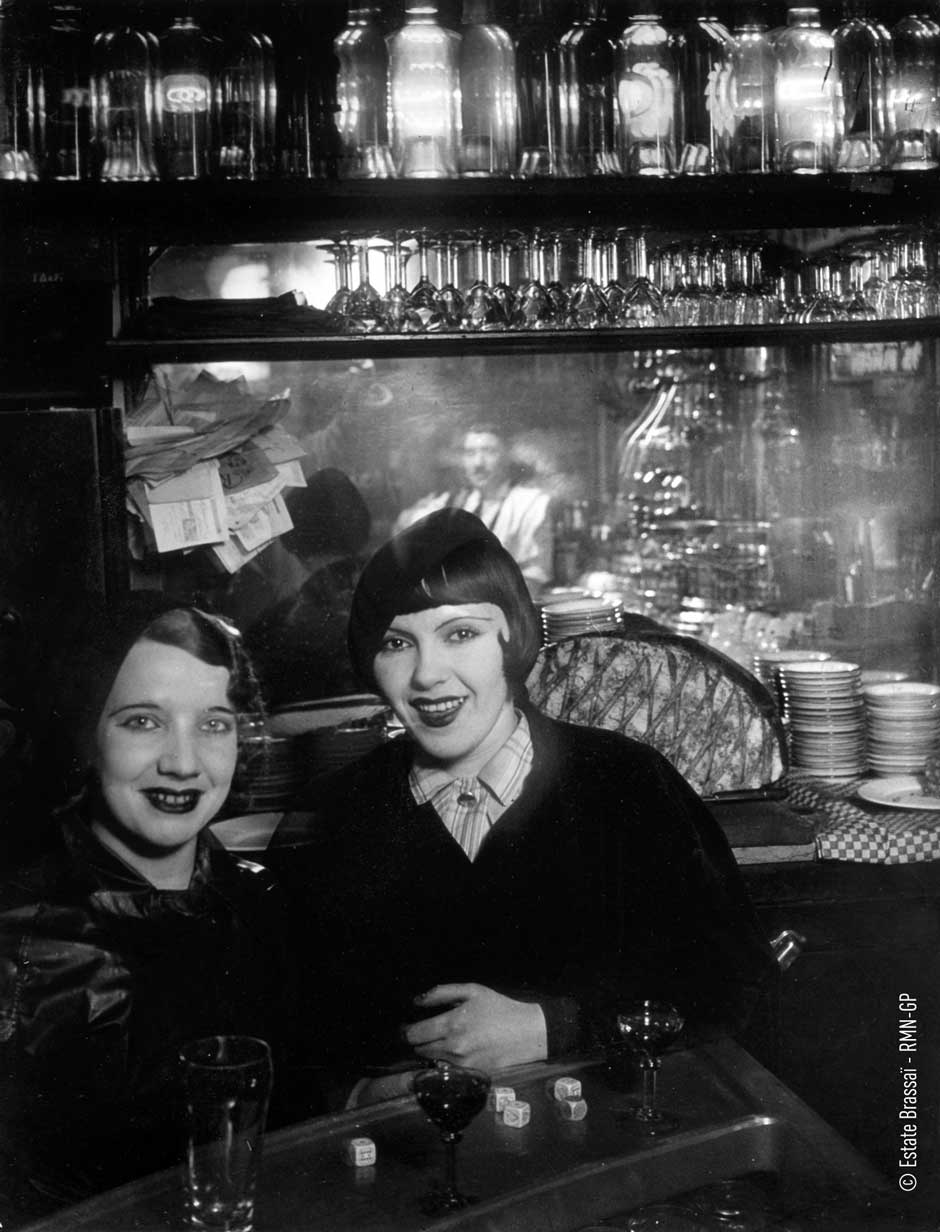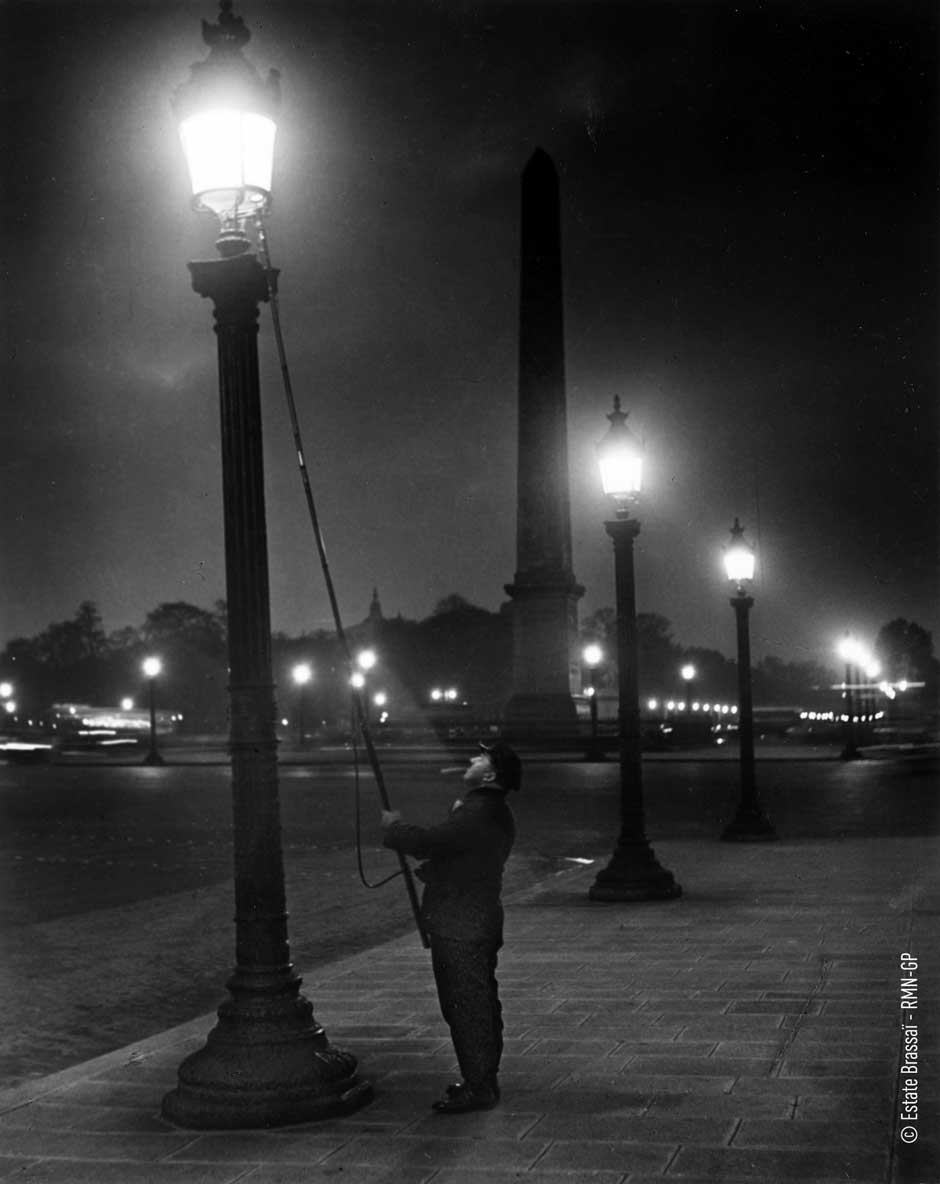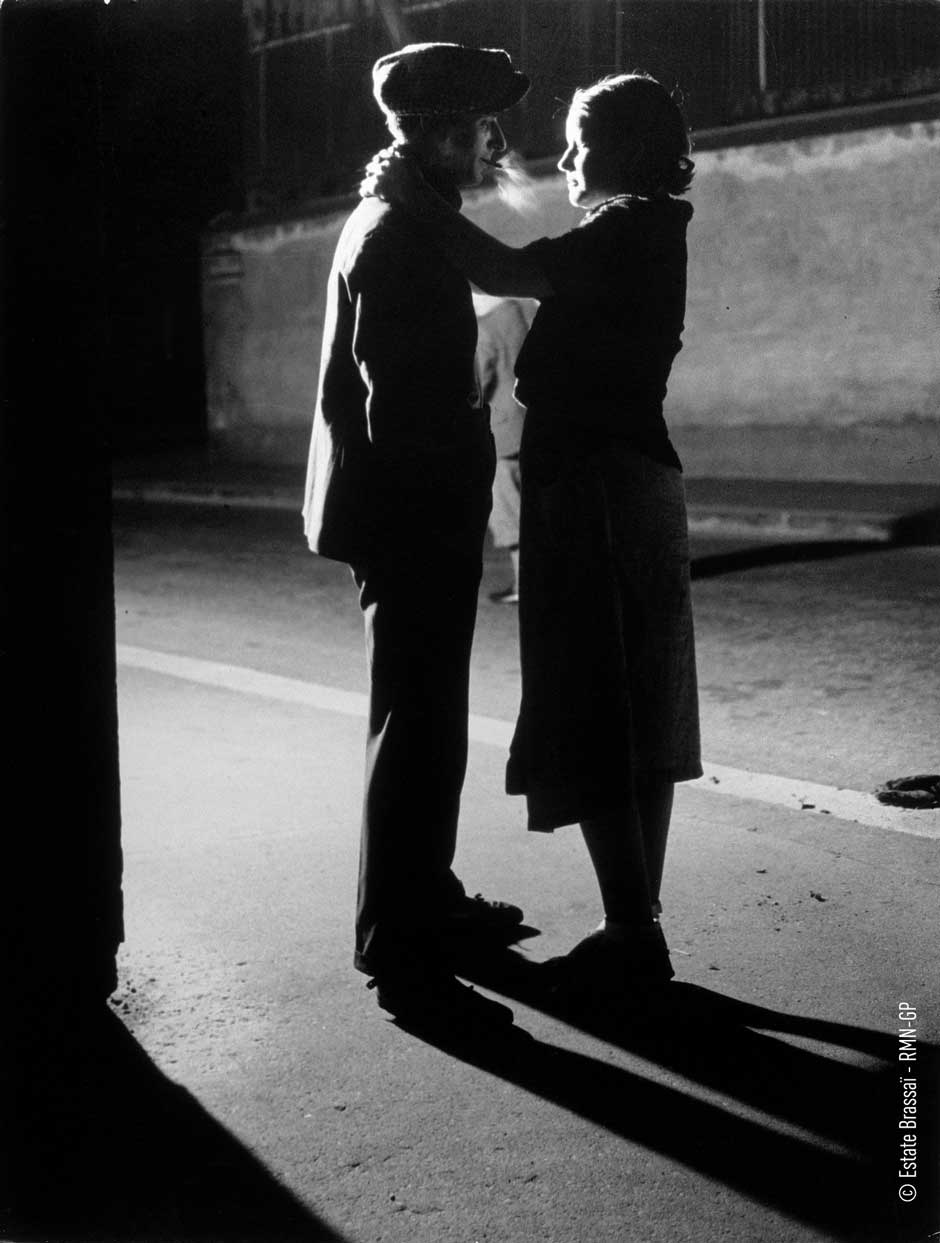Youths of my generation learned about Brassaï from his eye-opening Secret Paris of the 30s (1976). There were pictures of thugs, bums, prostitutes, brothels, drag balls, lesbian bars, interracial dances—who knew such things even existed forty years earlier? But then our fascinated naïvety was rewarded by further contemplation of the photographs, which were humane, sympathetic, endlessly inquisitive, beautifully composed, and drew every possible bit of poetry from the enveloping cloak of night—not more than half a dozen pictures were taken in daylight.
Astonishingly, Sylvie Aubenas and Quentin Bajac’s Brassaï: Paris Nocturne is the first major book on the photographer since then. In the meantime, thanks to scanning technology, the reproduction of photographs on the printed page has grown increasingly sophisticated, so that at last the blacks are bottomless, the grays are pearly, the lights are warmly alluring. The authors examine Brassaï’s vexed publication history—the publisher cancelled his Voluptés de Paris (1935) only to issue it later as a bootleg with the photographer barely given credit and no payment—and chart the intricate cross-influences in his life and work: Surrealism, the tabloid press, Henry Miller, his compatriot André Kertesz. And they reproduce a decade’s worth of astonishing photographs, including nearly the entire contents of the earlier book (except the pictures of opium dens, which for reasons they don’t explain he didn’t want reprinted after his death), as well as many previously unpublished, among which are tableaux of railroad bridges, fogbound parks, and neon-lit honky-tonk streets that live up to every cinematic fantasy one has ever had about the city. The nocturnal theme gives the book the sense of a narrative, as if all of these adventures are unfolding in the course of a single, very long, endlessly surprising night.
Brassaï: Paris Nocturne, by Sylvie Aubenas and Quentin Bajac, is published by Thames & Hudson.






